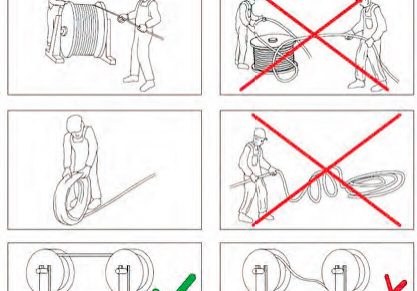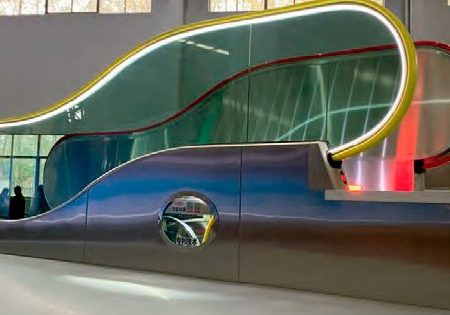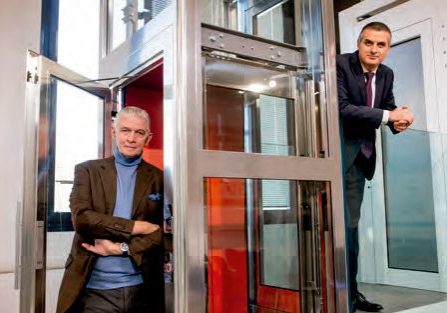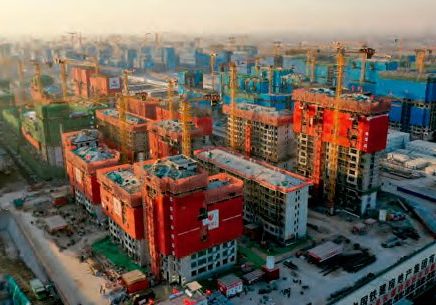The first attempt to tell a more complete story of the life and career of the VT industry’s early chronicler
John H. Jallings is a well-known figure in American vertical-transportation (VT) history. He authored the first comprehensive study of elevator technology: Elevators: A Practical Treatise on the Development and Design of Hand, Belt, Steam, Hydraulic and Electric Elevators (first edition, 1916/revised edition, 1918) and a related series of educational materials used to train a generation of American elevator technicians. The latter work was the subject of a two-part History series, “Elevator Education in the Early 20th Century” (ELEVATOR WORLD, April 2010 and May 2010). However, while his contributions to education have been explored, very little is known about Jallings’ life. The title page of his book included a brief description of his career:
“Mechanical engineer and elevator expert with Kaestner & Hecht Co., Chicago. For 20 years superintendent and chief constructor for J.W. Reedy Elevator Co.”[1] Additionally, the book’s introduction described, in broad and sweeping terms, his experience in the VT industry:
“The author has behind him nearly 50 years of actual experience in elevator building and has been a witness to all of these changes mentioned, as well as a contributor to the development of a number of them. He is, therefore, better qualified to speak of the historical development and of the construction of modern types than almost anyone now connected with the industry.”[1]
A brief obituary published in the Chicago Tribune described Jallings as a “designer of elevators for modern skyscrapers and author of books on the construction and operation of these devices.”[2] The obituary also stated he “had been associated with the J.W. Reedy Elevator Co., the Otis Elevator Co. and the Kaestner & Hecht Co.”[2] While these brief outlines suggest a lengthy and diverse career, they also leave much to the imagination. The following biography constitutes the first attempt to tell a more complete story of the life and career of John H. Jallings.
Jallings was born on March 27, 1847, in England. His father died when he was four or five years old; his mother remarried in the mid-1850s; and, in 1858, the family immigrated to the U.S., arriving in New York. However, within two years, they left America for Canada, moving to Halifax. Jallings returned to the U.S. as a young man in the mid- to late-1860s, settling in Chicago. The 1870 census listed his occupation as “machinist,” and his place of residence was a local boarding house. Unfortunately, nothing is known about Jallings’ training, which probably followed the apprentice model common in the 19th century. Additionally, “machinist” was a broad term used to describe individuals trained in a wide range of general engineering and manufacturing skills. There was, of course, no better setting for a young professional with a mechanical disposition than the dynamic industrial environment of 19th-century Chicago.
In 1870, the city was home to several elevator manufacturers, including J.W. Reedy. James Reedy had moved from Cincinnati to Chicago in 1868 with the expressed purpose of establishing an elevator company. This action coincided with the creation of H.J. Reedy Co. in Cincinnati, which was operated by James’ brother, Henry. Although the Great Chicago Fire of October 1871 destroyed his factory, Reedy quickly rebuilt his business and eventually became one of the region’s leading elevator manufacturers. Jallings joined the company sometime between 1868 and 1873. The 1873 Chicago directory states he was a foreman with J.W. Reedy. This title indicates he had a leadership role in the company, and Jallings held this title and role throughout the 1870s. However, while his title remained the same, his overall status likely changed in 1879 with his marriage to Lillian Reedy Kyte, James Reedy’s niece.
This family connection was probably the impetus in 1881 for Jallings’ participation to expand the company’s portfolio. In November 1881, Jallings, Reedy and Patrick H. Meehan each contributed US$2,000 toward the purchase of the Mason & Davis Foundry, where Meehan had worked since 1873. The company was renamed North Pier Foundry, with Reedy as president, Meehan as secretary and Jallings as treasurer. Reedy doubtless saw this venture as a means to readily supply the castings and related material needed for elevator manufacturing. However, this goal led to conflict between the partners in the spring of the following year.
In early 1882, Charles H. Mitchell & Co., a rival elevator manufacturer, approached the foundry about manufacturing castings. Reedy was opposed to “his” foundry supporting the work of a competitor. In contrast, Jallings and Meehan “maintained they would do work for anyone who paid for it.”[3] The final result of this disagreement was Jallings’ resignation as treasurer of the North Pier Foundry and his resignation from J.W. Reedy. However, he retained his stock in the foundry. This action, according a lawsuit filed in 1883, prompted Reedy and Meehan to attempt to “squeeze Jallings out, as he would not sell out to them. With this end in view, it is alleged they voted themselves US$2,500 a year apiece as salaries, which ate up all the profits.”[3] While the resolution of the suit is unknown, it may be assumed it caused a significant breach between Jallings and his former employer.
Following his departure from J.W. Reedy, Jallings joined, perhaps out of spite, Charles H. Mitchell & Co., where he worked as a foreman for approximately one year. In 1883, he left the company to form his own business, in which he advertised his expertise in “experimental machinery,” which included “speed lathes, drill presses, dies, punches [and] patent articles.”[4] While the omission of the word “elevator” appears to indicate Jallings had decided to shift his career focus, his absence from the VT world appears to have lasted less than a year. The May 24, 1884, issue of American Machinist included an announcement that “Jallings and Manning is the title of a new firm established at 80 Market Street, Chicago. They will do a general business as machinists, millwrights, elevator builders and repairers.”[5]
Unfortunately, very little is known about Jallings’ partner in this new enterprise. In 1880, Phillip J. Manning was listed in the Chicago directory as a machinist. In 1883, he founded P.J. Manning & Brother, which was advertised as an elevator manufacturer; however, this short-lived business was apparently closed following the establishment of Jallings and Manning. By 1887, they were advertising themselves as “builders of improved steam, hydraulic & hand-power elevators” for passenger and freight use.[6] Unfortunately, that same year witnessed the company’s closure. The failure of this business did not, however, prompt Jallings to leave the VT industry. He joined the Ellithorpe Air Brake Co., manufacturer of the well-known Ellithorpe air-cushion safety device, in late 1887 or early 1888. He worked for Ellithorpe for just over two years, at which point his career took an unexpected turn.
Reedy died on October 10, 1889; the cause of death was listed as “consumption,” which, in the 19th century, was the common term for tuberculosis. Reedy’s death opened the door for Jallings’ return to what was now J.W. Reedy Elevator Manufacturing Co. He was hired as superintendent in early 1891. He worked for Reedy in this role until 1904, when his position was changed (for unknown reasons) to that of salesman. This change in duties may have been the cause of Jallings’ second departure from the company in late 1905. His next role in the VT world reflected the industry’s growth during the late 19th and early 20th century. In 1906, he joined the Warsaw Elevator Co. of Warsaw, New York. Remaining in Chicago, he worked as the company’s Western representative for three years. He was named a company manager in 1909.
While it was common for companies to maintain and staff branch offices during this period, the nature of their function and commercial operation has not been fully explored and remains a topic for future research into the business of selling elevators. The long-distance relationship with his employer may have prompted Jallings to leave Warsaw in 1911 and join the local firm of Kaestner & Hecht. It should be noted that, at this time, Jallings was 64 years old and brought approximately 40 years of experience with him to his new position. This may account for the 1916 description of his role as “mechanical engineer and elevator expert.”
It was during Jallings’ tenure with Kaestner & Hecht, of course, that he wrote his book. Given the time needed for this project, it is intriguing to speculate on how his employer perceived this endeavor. Perhaps, given the many illustrations that featured Kaestner & Hecht products, the company calculated that the book’s potential advertising value equaled the time commitment of their resident “elevator expert.” Jallings appears to have worked for Kaestner & Hecht until the early 1920s, after which he apparently retired. However, detailed records of his life from 1916 to 1935 have not survived; thus, the precise date of his departure is unknown, and no evidence of his working for Otis (mentioned in his obituary) has been found.
While this biography, it is hoped, sheds new light on an important historical figure, it fails to fully answer an important question. Jallings’ lengthy career and experience with J.W. Reedy, Charles H. Mitchell & Co., Jallings & Manning, Ellithorpe Air Brake Co., Warsaw Elevator Co. and Kaestner & Hecht provided him with a wealth of historical and contemporary information that served as a critical foundation for his extraordinary book. However, this experience, centered in Chicago, does not fully explain his almost encyclopedic knowledge of the overall trajectory of American VT history. His profound understanding of this subject is reflected in his text and the countless original line drawings and photographs that accompany his words. A (long-term) future project of your author would be an annotated edition of his book that “unpacks” and explains his numerous historical references.
References
[1] John H. Jallings. Elevators: A Practical Treatise on the Development and Design of Hand, Belt, Steam, Hydraulic and Electric Elevators, Chicago: American Technical Society (1916).
[2] “J.H. Jallings Funeral to be Held Tomorrow,” Chicago Tribune (April 11, 1935).
[3] “An Alleged Ill-Used Partner Sues for His Rights,” Chicago Tribune (October 17, 1883).
[4] Advertisement, Chicago Tribune (August 19, 1883).
[5] Untitled article, American Machinist (May 24, 1884).
[6] Zell’s Classified United States Business Directory for 1887, New York: American Reporter Co., Ltd. (1887).
Also read: Darling Brothers
Get more of Elevator World. Sign up for our free e-newsletter.










